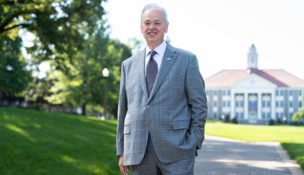Changing demographics of high school graduates
Gary Robertson //October 30, 2013//
The flow of high school graduates in Virginia is slowing. Also, the demographics of the state’s high school graduates will change during the next 15 years.
The changes could present challenges for Virginia’s colleges and universities, especially those without strong financial aid programs.
The Wall Street Journal recently reported that enrollment rates of some smaller, lesser-known colleges and universities were down this year.
The newspaper cited years of rising tuition, the increased popularity of Internet courses and a continuing weak job market for college graduates. A big factor, however, is a shrinking pool of high school graduates.
Nationally, the number of high school graduates peaked at about 3.4 million in 2011. It was projected to gradually decline to 3.2 million this academic year before leveling off at about 3.3 million for a half dozen years.
The number of high school graduates then would begin to grow again in about 2020, but not at the rate seen in previous decades, according to a recent report by the Western Interstate Commission for Higher Education (WICHE).
WICHE data indicate that states in the Northeast and Midwest will face declines in high school graduates in the years ahead, while most states in the South and West will see modest increases.
WICHE predicts a dip in the number of high school graduates in Virginia in coming years. The commonwealth had 87,399 diploma graduates in 2011-12, up from about 72,000 in 2003-2004, according to the Virginia Department of Education.
According to WICHE projections, the number of Virginia high school graduates will decline to 82,000 to 84,300 for several years before climbing to a new high of 93,000 by 2023-24.
In addition to changes in their total number, the demographics of the future generation of Virginia high school graduates will be remarkably different from those that preceded it. That’s also true in other parts of the country.
In Virginia, white non-Hispanic public high school graduates are projected to decline from 63 percent (49,500) of the public high school graduating class in 2008-2009 to 52 percent (43,300) in 2027-28.
Meanwhile, the proportion of Hispanic high school graduates will soar from 6 percent to 16 percent by 2023-24, before dipping to 14 percent over the next few years.
The number of Asian/Pacific Islanders will double from 6 percent of the class to 12 percent by 2027-28.
Black non-Hispanic graduates will drop from 24 percent to 21 percent during that time.
One of the biggest challenges for institutions of higher education trying to cope with these changes may be financial.
The statewide median income among working-age adults (25-64) in Virginia was $40,095, 114 percent of the national average, according to the U.S. Census Bureau’s 2006-2010 American Community Survey.
White non-Hispanics and Asian/Pacific Islanders had incomes above the statewide median.
But Hispanics and black non-Hispanics, who will make up more than a third of the 2027-28 high school graduating class, will be coming from families who currently are the least able to pay for college.
Hispanics in Virginia have a median income of $28,557, with one in four earning $17,100 or less, the Census Bureau reports.
Black non-Hispanics have a median income only slightly higher, at $30,938, with one in four earning $17,100 or less.
In late August, President Obama announced proposals to make colleges more accountable and affordable by rating them on tuition and graduation rates, as well as the percentage of lower-income students who attend and other metrics.
Those ratings would then be linked to federal financial aid. The president’s proposals would require congressional approval before they could be implemented.
Another challenge for colleges may be the lack of readiness for higher education among potential applicants.
ACT, formerly known as American College Testing, recently reported that 75 percent of U.S. high school graduates in 2013 who took the ACT college readiness exam were not fully prepared for college.
ACT officials said the results are due to a growing base of test-takers from increasingly diverse backgrounds.
On the other hand, Virginia’s 2013 public school graduates achieved significant gains on the SAT college-admissions test, scoring higher than the national average.
How all these trends will play out is yet to be seen.
Tod Massa, director of policy research at the State Council of Higher Education for Virginia, says that, even with the brief decline in the number of high school graduates, Virginia college enrollments are projected to continue going up.
Some private institutions, however, may struggle to make their classes.
“That is because, in part, they’re competing with large public institutions that have grown tremendously,” Massa says.
He says some of Virginia’s private colleges and universities might become institutions of access, providing more opportunities for first-generation college students and for high school graduates who are less college-oriented.
a
















